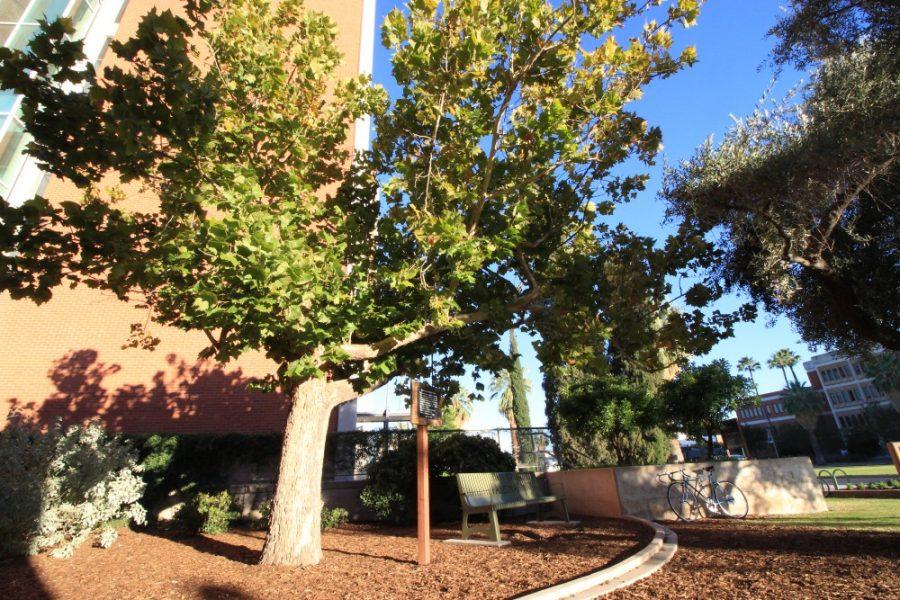You won’t be-leaf how many neat plants you can see on campus. While spring may not officially begin until March 20, campus plants are springing into action early. Most people don’t know that many edible plants grow on the UA campus.
The Campus Arboretum began in 2002 and “was established to preserve, curate and enhance this extensive collection,” according to the arboretum’s website.
The arboretum gives tours throughout the semester, including a tour of the edible plants on campus. Carol Brown, who has worked for the arboretum for about a year, gave one of these tours to a group of students.
“There’s lots of things in the desert to eat,” Brown said.
The first edible plant we came across was the Prosopis alba, commonly known as an Argentine mesquite, across from the Social Sciences building.
At first glance, it looked like a regular tree, but people can grind the pods up to make mesquite flour. The wood can also be used to add flavor while barbecuing.
Another plant, Moringa oleifera, or the horseradish tree, grows between the Forbes building and Herring Hall. The leaves contain vitamin C, calcium, vitamin A, potassium and protein.
“It’s kind of a miracle species because almost every part of the plant is edible,” Brown said.
There’s only one problem with growing this plant on campus: It’s frost-sensitive. Brown told the group that in 2011, a frost nearly killed many campus plants, and almost killed the horseradish tree.
If you’re ever trying to determine whether to eat a plant, check the fruits.
“Fruits and flowers are our main way to identify plants because they’re unique to the species,” Brown said.
Many different types of plants find their homes in the Women’s Plaza of Honor and the surrounding areas. One of them is a eucalyptus tree, which towers over the buildings. Eucalyptus originated in Australia. According to Brown, it is the largest family of trees in the world.
“There are Eucalyptus that fill almost every niche in a forest,” Brown said.
The most interesting part of the tour was when everyone got to taste an edible plant. Calamondin trees, also found in the Women’s Plaza of Honor, produce small orange citrus fruits. Although it is difficult to reach them because the trees are several feet tall, the rewards proved worth it.
The small fruit is eaten whole by simply popping it into your mouth. While the initial taste is sour, the flavor grows on you after eating a few.
Brown described the taste of the Calamondin as “a cross between a lemon and a kumquat.”
One can also not forget the olive trees that incessantly drop olives on the sidewalks of James E. Rogers Way. They are European olive trees and are edible on their own, but they can produce olive oil as well.
For more information on campus plants, look for the little signs under the plants and check out the interactive online plant map and arboretum.arizona.edu/tree_tours for more info.
Follow Taylor Brestel on Twitter









